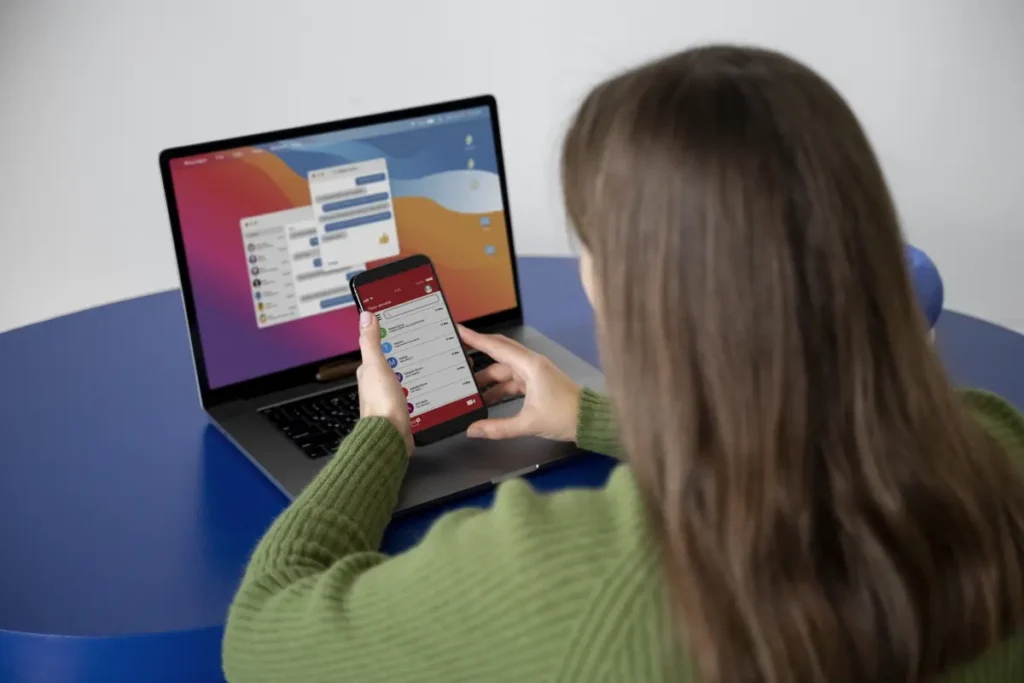Content:
- 1 Set things in motion before their first day
- 2 Make their first day feel clear
- 3 Make sure they have a friendly face to connect with
- 4 Standardize your documentation
- 5 Clarify responsibilities and success metrics early
- 6 Introduce them to your tools with context
- 7 Encourage early collaboration
- 8 Prioritize culture and connection
- 9 Build a phased onboarding approach
- 10 Give managers the tools to lead onboarding well
- 11 Help every new team member feel at home
- 12 Use analytics to improve over time
- 13 Why onboarding defines long-term success
- 14 What people take away from day one
- 15 FAQs about onboarding remote employees
- 15.1 What makes remote onboarding successful for distributed teams?
- 15.2 How can companies onboard remote employees across different time zones?
- 15.3 Why should businesses standardize their onboarding process for remote hires?
- 15.4 How does GlobalTeam support remote onboarding for new virtual assistants?
Starting a new job remotely is a lot. People don’t have a desk to walk up to or someone to casually ask stuff. So the first few weeks? They kind of decide how everything else will go. Some folks find their flow fast. Others get stuck just trying to figure out who to ask or where things are.
That’s why onboarding matters, not just a checklist. It’s how someone feels connected, or completely lost. If it’s done right, they settle in quicker. They know where to start. They feel part of things. Doesn’t matter if they’re in the same city or halfway across the continent. What matters is that they feel ready, and not just thrown in.
When onboarding has a rhythm to it, something thoughtful, not improvised, people tend to find their place faster. Even if they’re starting from a different time zone or logging in from a small apartment kitchen instead of an office, they still feel like part of something. It doesn’t need to be complicated or overly polished.
What matters is that it feels natural and steady. So instead of ticking boxes, let’s explore how to create an onboarding experience that actually helps people feel comfortable, connected, and ready to contribute.
Set things in motion before their first day
The onboarding journey actually starts well before their first video call. As soon as someone accepts the offer, it’s a good moment to start laying the groundwork—just a few thoughtful steps can make their first days feel smoother and less overwhelming.
If you take care of the small things early, like setting up their accounts or explaining what the first day will look like, everything feels smoother. It takes the pressure off and helps them feel more relaxed from the beginning.
So even before day one officially begins, having their laptop ready, accounts set up, a clear schedule in their inbox, and tools like Slack or email already working can shape how they experience everything that follows. It shows you’ve thought ahead, and it saves them from having to ask where to start or what comes next, letting them ease into the team with confidence.
Make their first day feel clear
That first day matters a lot, especially when everything happens remotely and there’s no chance to walk them around the office or bump into teammates. One simple way to make it feel welcoming is to set up a short call with their manager or team lead, something relaxed, just to say hello and help them ease into the day.
That first chat is a good chance to make them feel welcome and valued. It’s the moment to talk about their experience, show how excited the team is to have them on board, and let them ask anything that’s on their mind as they get settled.
It’s also a good idea to share a simple schedule for their first day, with just a few easy blocks. Maybe a quick chat with HR, a walkthrough of the product, and some time with a teammate to get to know each other.
Keeping things organized but not overwhelming helps them ease in, take everything at a steady pace, and wrap up the day feeling comfortable instead of worn out.

Make sure they have a friendly face to connect with
Starting a new job from home can feel a bit distant at first, especially in the beginning. It makes a big difference to connect them with someone on the team, not a manager, but a teammate who knows how things usually go. That person can help answer questions, explain how the team works day to day, and give them a better feel for how things actually run.
Having someone check in regularly, offer to go through things together, and explain how the team actually works can make a big difference. It helps bridge the gap between the official onboarding and the day-to-day flow. It’s also a great way to share knowledge and build trust, even when people are working from different locations.
Standardize your documentation
One of the biggest advantages of remote teams is the ability to scale knowledge through clear, written documentation. Yet many companies still rely heavily on verbal instructions or siloed information.
A strong remote employee onboarding experience includes easy-to-access resources that guide the new hire through your systems, workflows, and culture.
It’s helpful to keep everything in one place, like a shared doc or internal wiki, with sections that are easy to find. You can include the tools they’ll be using, step-by-step processes, company guidelines, team structure, and even examples of past projects.
Having that kind of hub lets new hires find what they need without feeling like they have to message different people every time a question comes up.
Clarify responsibilities and success metrics early
When people join a team remotely, clear direction makes a big difference. Even the most motivated hires need to know what’s expected of them early on. It helps to talk through their role, what success looks like, and how their work connects with the team, all within the first few days so they can start off with confidence.
Managers should walk through a 30-60-90 day plan that outlines specific objectives, who the hire will collaborate with, and what results the company hopes to see in the first quarter. This framework helps the employee track their own progress and also signals how they’re contributing to broader company goals.
Introduce them to your tools with context
One of the biggest mistakes when figuring out how to onboard remote employees is overwhelming them with dozens of tools on day one. Instead of sharing a long list of software platforms with no explanation, walk them through each tool’s purpose during real onboarding activities.
You can walk them through how the team keeps things organized in tools like ClickUp or Asana, show them how to mention someone in a Notion doc, and explain which Slack channels are important to check regularly. When new hires understand how each tool fits into the team’s daily flow, they can jump in more easily and feel sure about where to focus their attention.

Encourage early collaboration
To feel part of the team, people need to be included early. One good way to do that is by giving them a small task during their first week, something simple but useful that involves working with others. It could be helping with some research, sitting in on a meeting, or putting together a short summary. That first bit of collaboration builds confidence and starts real connections.
Early collaboration builds confidence, improves social integration, and makes the new hire feel that their skills are being recognized and valued. It also helps the team see their potential and begin building trust.
Prioritize culture and connection
Building a strong culture across a remote team takes clear intention, consistent actions, and a genuine effort to show people how the company operates and what it values. Onboarding is the right moment to introduce values, communication habits, and decision-making styles, while also making room for personal connection through casual conversations and small moments that bring people together.
One way to strengthen that experience from the start is to hire a Virtual Customer Service Assistant who already knows how to create rapport in a remote setting and support team connection from day one.
Casual virtual meet-and-greets, team lunch calls, and internal “About Me” boards go a long way in helping remote employees find their place in the social fabric of your go a long way in helping remote employees find their place in the social fabric of your company.
In those early days, casual interactions help new hires get to know the people behind the job titles. They start picking up how the team works together and feel more at ease jumping into conversations or sharing ideas. These small moments of connection make it easier to communicate openly and build strong relationships, even across different teams and locations.
Include a 30-day feedback loop
Structured feedback during the onboarding journey helps both the new hire and the company. Around the 30-day mark, schedule a dedicated check-in to hear how the experience has felt so far. Ask what has been helpful, what felt unclear, and where they might need more support. This conversation should go beyond performance and focus on the overall experience of joining and integrating into the team.
Use the feedback to adjust the onboarding plan as needed and to improve the experience for future hires. When employees feel heard and see that their insights lead to action, it reinforces trust and belonging early on.
Provide training that respects different learning styles
Everyone picks things up differently, and that matters even more when people are working remotely. Some learn by trying things out, others prefer reading through guides, watching short videos, or following clear instructions step by step. Giving new hires a mix of options helps them learn in a way that feels comfortable and makes the whole onboarding experience smoother and more useful.
It helps to offer different ways to learn, like short self-paced modules, live sessions where they can ask questions, and chances to sit in on real projects with teammates. New hires feel more confident when they know they can go back to a resource, ask for help, or take their time to fully understand how things work. That kind of flexibility makes it easier to settle into the role and hold onto what they’ve learned.
Build a phased onboarding approach
Remote onboarding works best when it’s seen as an ongoing process rather than a checklist to complete in a week. A phased approach allows new team members to absorb information gradually, engage with different parts of the business, and take ownership of their role at a sustainable pace.
In the first 30 days, focus on orientation, tools, and relationships. Between day 30 and day 60, shift to active contribution, setting clear goals and beginning independent projects.
By day 90, the new hire should feel fully integrated, contributing confidently, and exploring ways to bring added value. Clear phases reduce overwhelm and create momentum without pressure.
Give managers the tools to lead onboarding well
Managers have a big impact on how someone experiences their first weeks on the team. When they know how to guide and support new hires, things get off to a smoother, more confident start. But that only happens if managers have the time and tools they need to be present and involved from the beginning.
Give managers simple tools that make onboarding easier, like templates, role-specific timelines, and quick guides for giving feedback or having one-on-one check-ins. What matters most is making sure they have the time to actually show up for their new team members during those first few weeks. When managers stay close and involved early on, people feel supported and start building trust right away.
Help every new team member feel at home
Remote onboarding can feel meaningful when there’s a genuine effort to connect on a personal level. Taking time to learn about the new hire’s goals, how they like to learn, and what experiences they bring helps build trust early on. Celebrating small wins during those first weeks and acknowledging their contributions shows that their presence already matters.
Sending a handwritten note, a welcome kit, or a team video message adds a thoughtful touch that reinforces company values. It reminds the employee that they are joining a team that values people, not just productivity.
Use analytics to improve over time
An effective remote employee onboarding process evolves based on real data and human insight. Track key metrics such as time to full productivity, early engagement scores, and retention at the 3-, 6-, and 12-month marks. Look for patterns in where new hires thrive or struggle.
Incorporate anonymous onboarding surveys or open-ended interviews during the first 90 days. If multiple hires flag the same gaps or delays, it’s a signal to refine your process. Onboarding is not static. It should reflect your company’s growth and your people’s needs.

Why onboarding defines long-term success
When done right, onboarding is more than just orientation. It’s a strategic opportunity to lay the groundwork for strong performance, healthy collaboration, and employee loyalty. Especially in remote-first teams, thoughtful onboarding signals that your company knows how to lead with clarity, care, and intention.
Employees who feel welcomed, supported, and equipped from the start are more likely to stay longer, take initiative, and grow with the organization. In contrast, a disconnected or confusing onboarding experience often leads to early frustration and disengagement.
Remote environments require companies to work harder to replace what would naturally happen in an office, spontaneous support, social connection, and real-time clarification. A well-designed onboarding process fills that gap and makes remote work a sustainable, fulfilling experience from the very beginning.
What people take away from day one
A good start helps new team members feel valued from day one. In remote teams, where there’s less face-to-face time, those first moments really show how much the company cares and how it supports its people.
Focusing on people from the start helps build trust, gives direction, and creates a sense of commitment that lasts. Every person who joins deserves an experience that feels clear, supportive, and truly connected from day one.
That’s what we care about at GlobalTeam. We partner with growing companies to make sure every new remote hire starts off feeling ready and supported. We connect businesses with talented professionals across Latin America and help teams build onboarding experiences that feel clear, consistent, and truly welcoming. In the end, it’s about building real connections, no matter where people are working from.
FAQs about onboarding remote employees
What makes remote onboarding successful for distributed teams?
A strong remote onboarding process helps new hires feel welcome, prepared, and clear on how to contribute. It starts before day one and includes structure, support, and early collaboration that builds confidence from the beginning.
How can companies onboard remote employees across different time zones?
Clear documentation, asynchronous tools, and staggered onboarding sessions allow new hires in different time zones to stay aligned. GlobalTeam ensures the virtual professionals joining your team are well prepared to collaborate across time zones, supporting a smooth and consistent onboarding process from the start.
Why should businesses standardize their onboarding process for remote hires?
Standardizing onboarding improves clarity and reduces the learning curve. With clear expectations, accessible resources, and a phased approach, remote employees can become productive sooner and feel more connected to the team.
How does GlobalTeam support remote onboarding for new virtual assistants?
GlobalTeam connects businesses with virtual professionals across Latin America who are ready to integrate into remote teams with clarity and confidence. We help ensure that every new hire joins with the right tools, clear expectations, and the preparation needed to contribute smoothly from day one.

